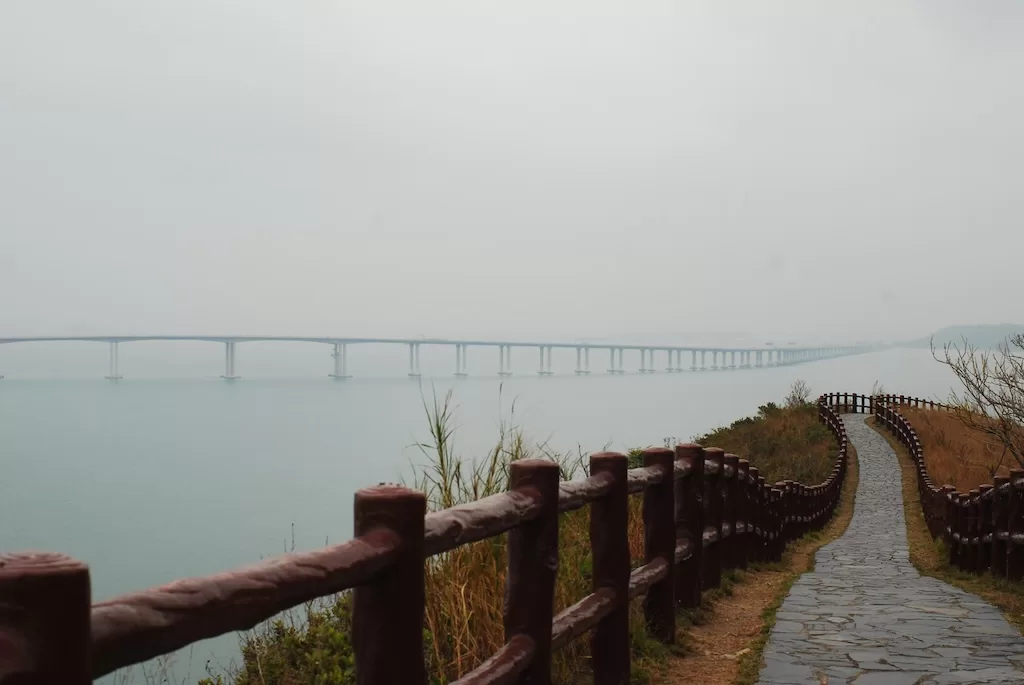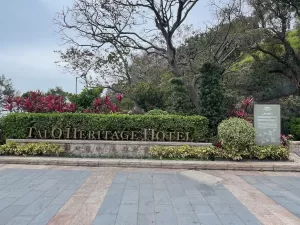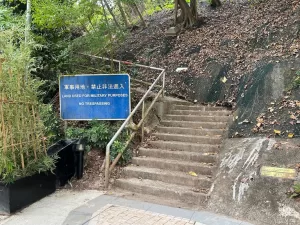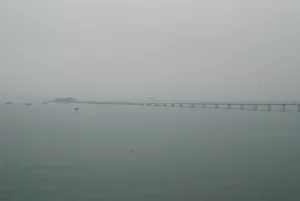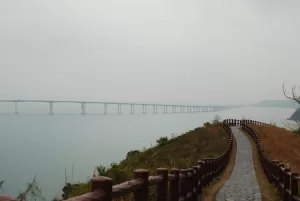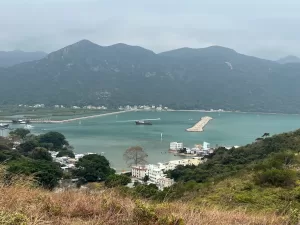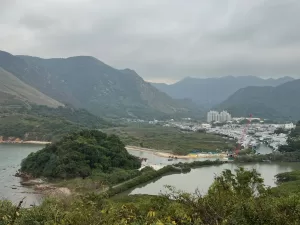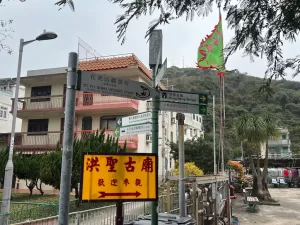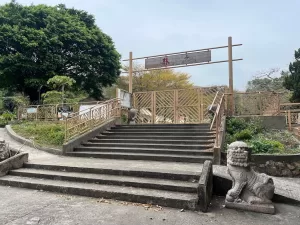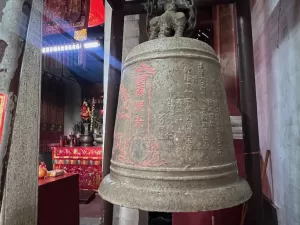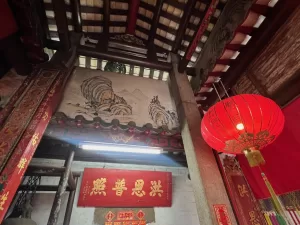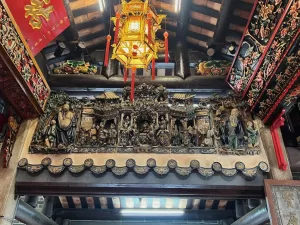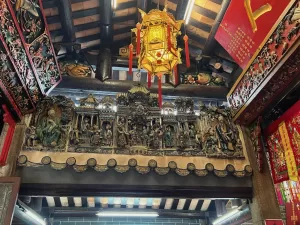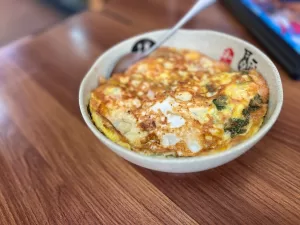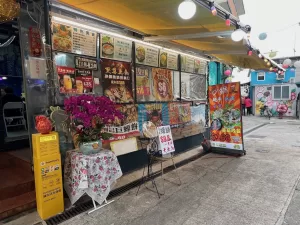Lantau Longing — Open Views of HZMB at a Short Hike in Fu Shan
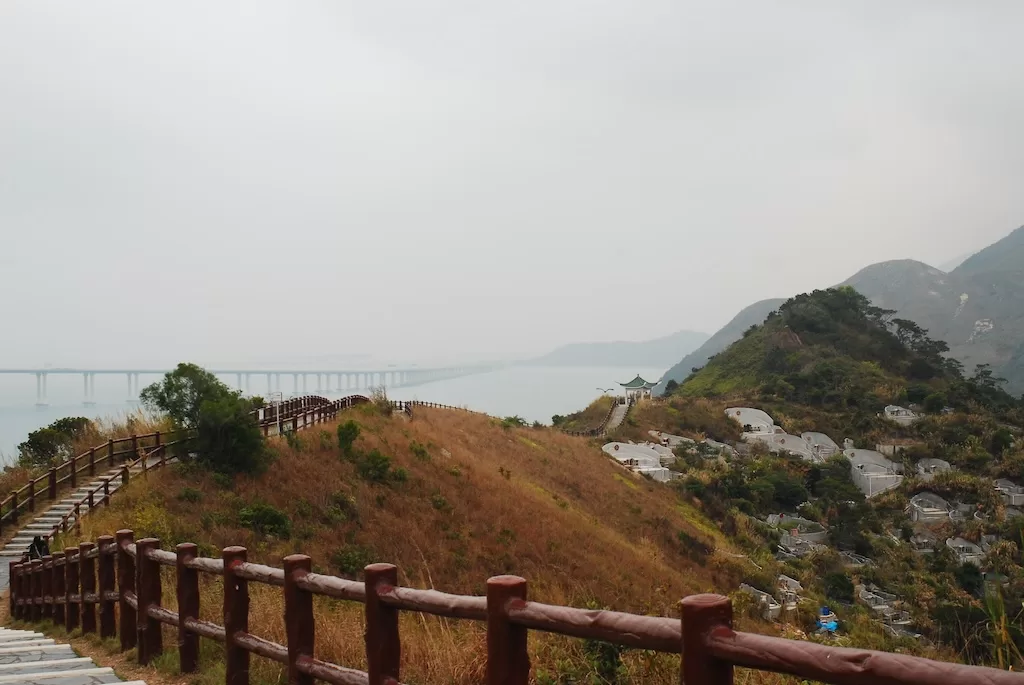
Tai O of Lantau Island is known for many wonderful things. A thorough exploration of the treasures of Tai O is a whole-day affair. I have previously covered the Tai O Heritage Hotel, formerly Old Tai O Police Station. On this slightly cloudy spring day I decided to see a few things in Tai O to complete the coverage of this well-known fishing village.
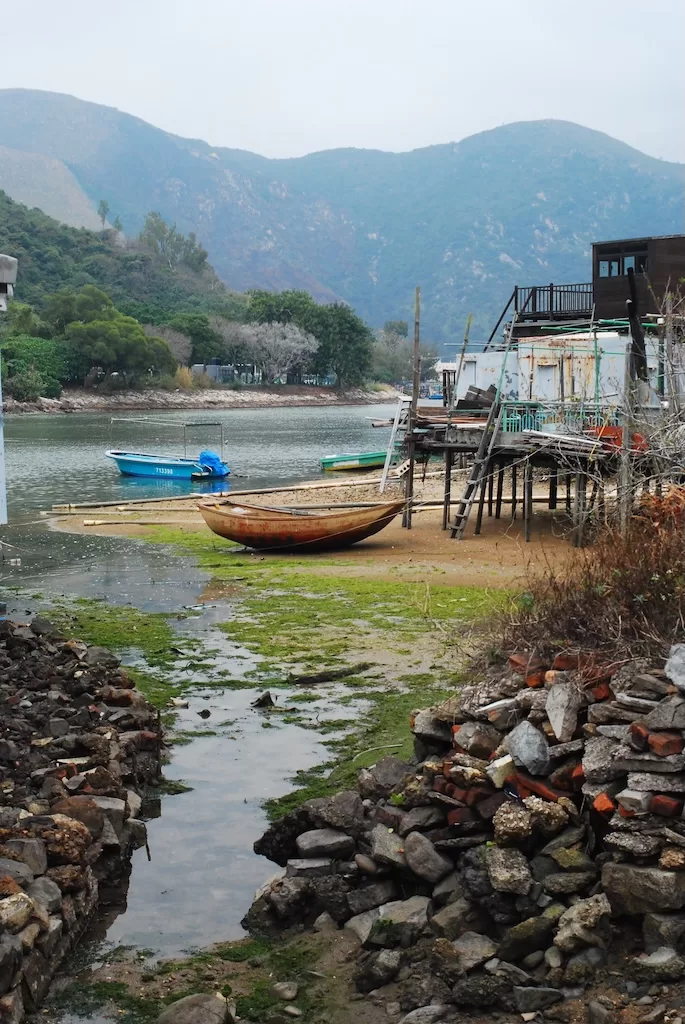
As a fishing village, Tai O takes pride in all the local history and industry that embody its ocean-swept character. It might be a little extreme to call it “the Venice of Hong Kong,” but it does have this good name. The stilt houses made of metallic exteriors stand ever so bravely through the many storms that brought floods to their already-elevated floors.
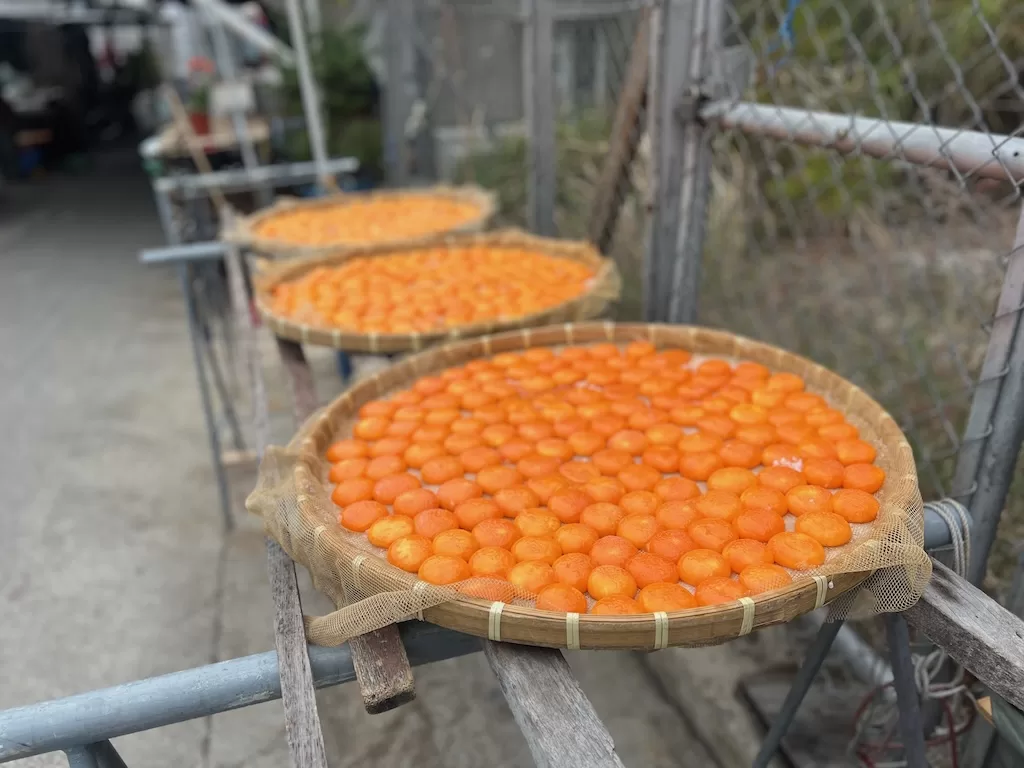
It is no Venice, in the farthest stretch of imagination, but Tai O comes with a beauty of its own.
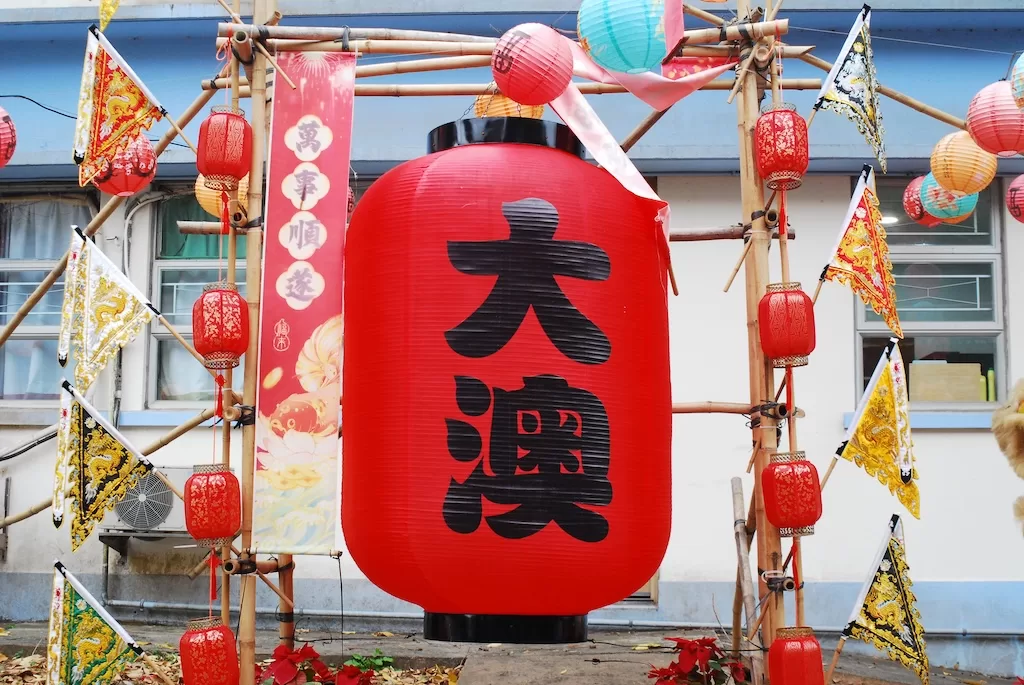
The Tai O Heritage Hotel
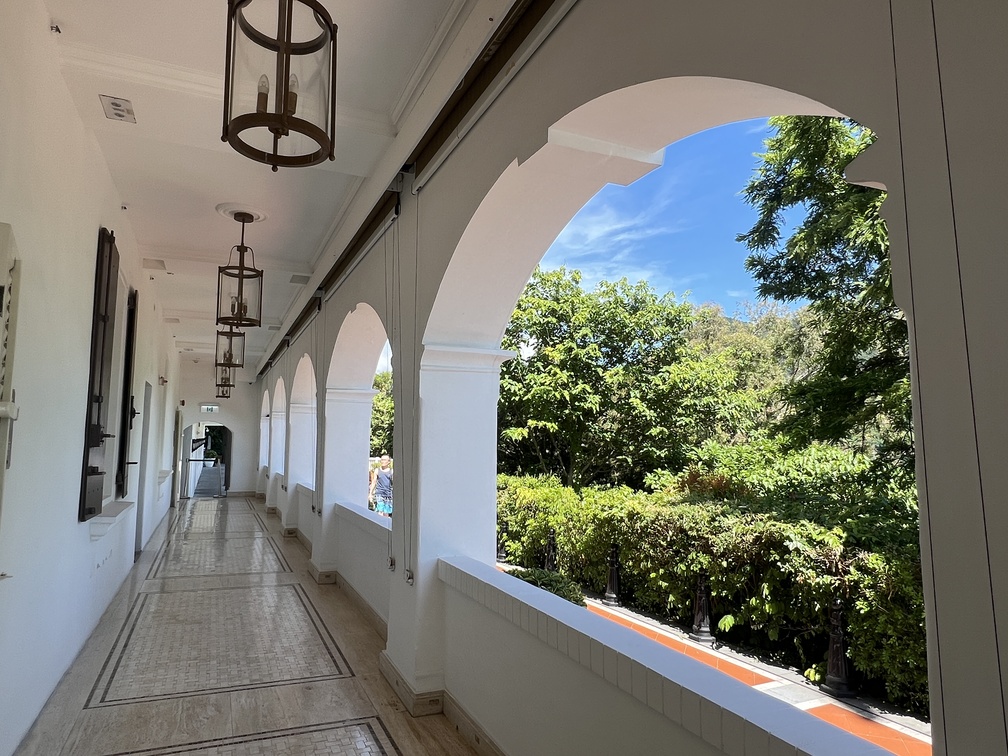 Formerly the Old Tai O Police Station, the Tai O Heritage Hotel lies on the westernmost end of Tai O in Lantau Island. It is a great venue to learn about the history of Tai O, and also to savor some of the cuisine that features local ingredients.
Formerly the Old Tai O Police Station, the Tai O Heritage Hotel lies on the westernmost end of Tai O in Lantau Island. It is a great venue to learn about the history of Tai O, and also to savor some of the cuisine that features local ingredients.
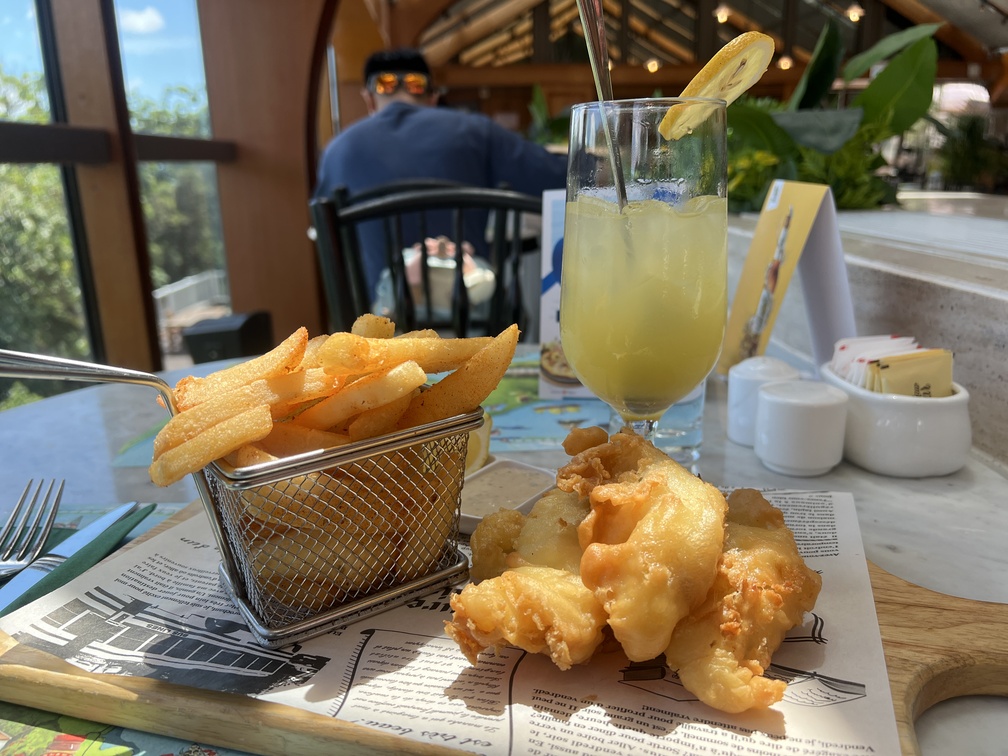
The Tai O Barracks
According to government sources, the People’s Liberation Army’s Hong Kong Garrison has a total of 19 military sites in Hong Kong. These defensive sites are properly the property of the PLA. Tai O Barracks, formerly Naval Coastal Observation Station, was one of the 19 defense sites that the British government handed over to the Chinese government pursuant to an Exchange of Notes made in 1994.
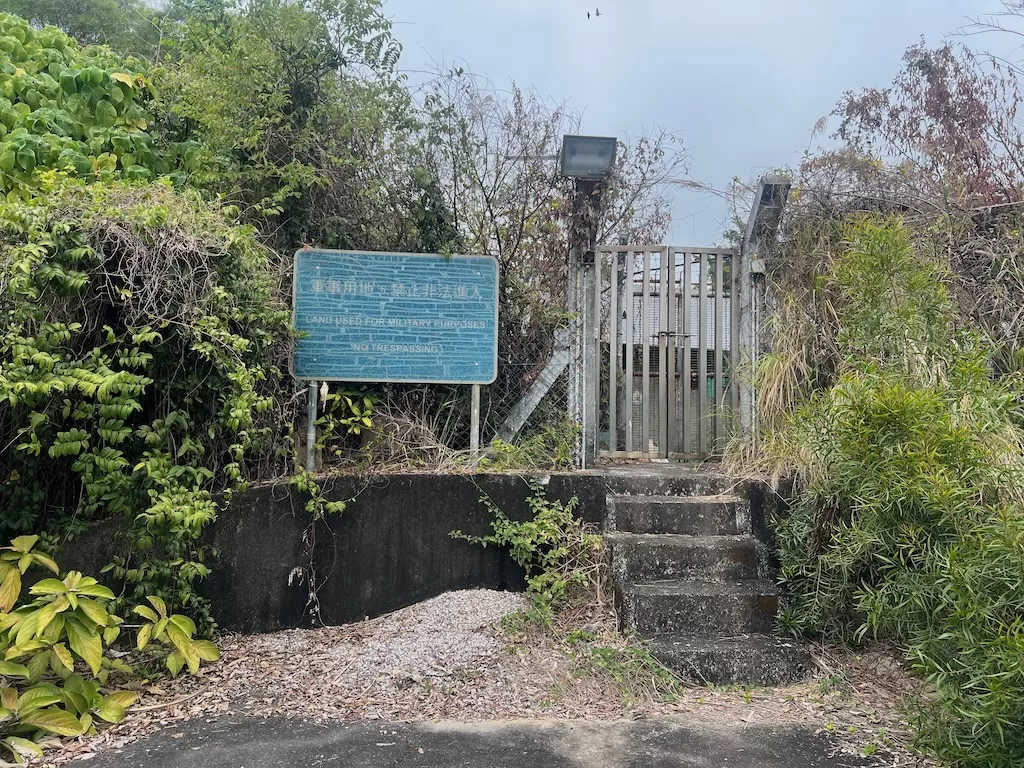
Standing as it is now, the site is perhaps not worth visiting for common visitors, unless you are a military history buff. First of all, the whole site is locked. This is the best that I could capture with photograph.
Secondly, the environment also suggests that the site is deserted. Without entry into the facility, I could not see the historic barracks inside.
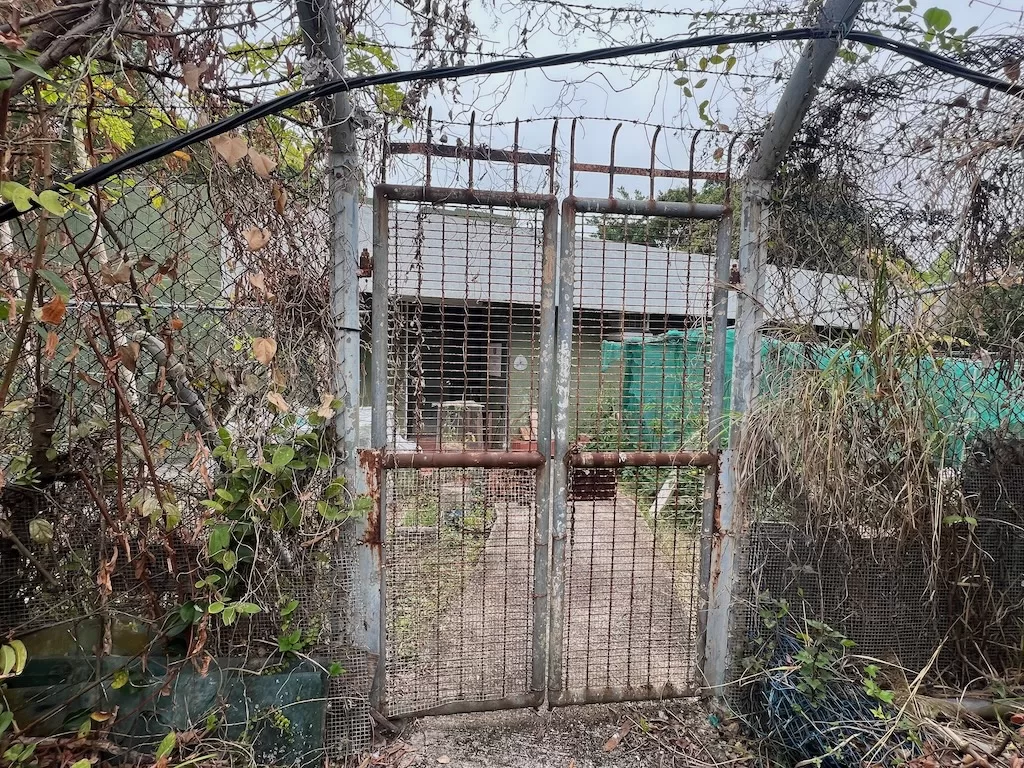
What a military history buff can do is to search out for the boundary stones marked D.L. (defense lot) throughout the site. I saw some danger in that, however, because the surrounding areas are densely vegetated. The hilly slopes are also unpredictable. See here for the map of the Tai O Barracks on historicalwalkhk.com.
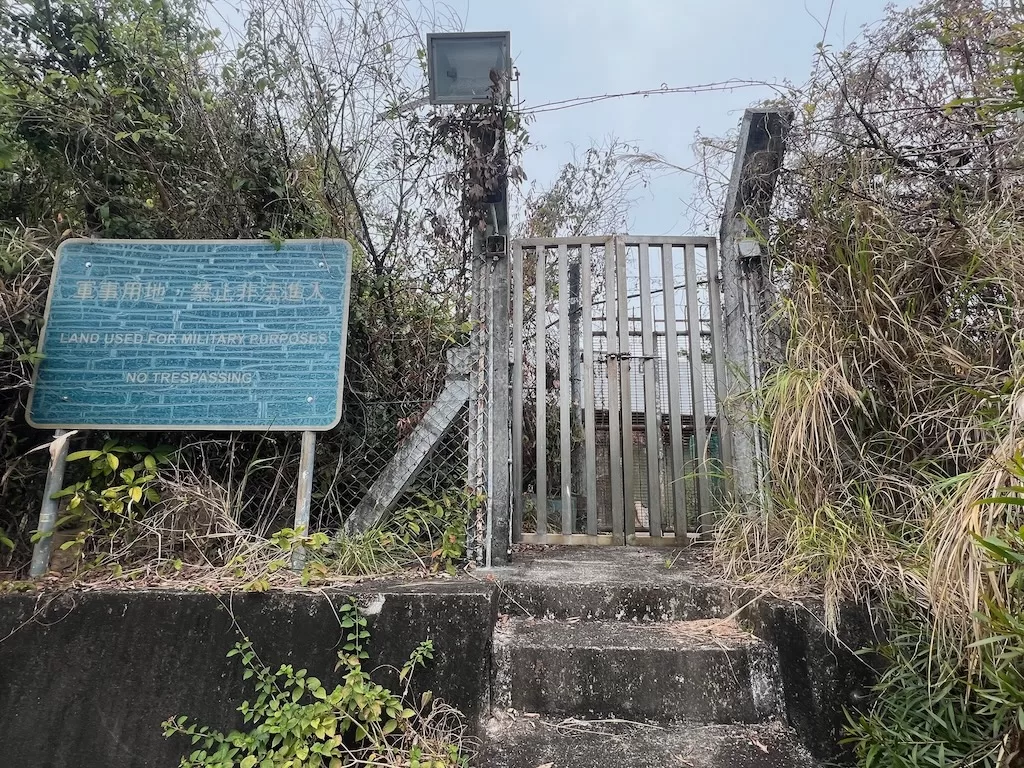
The Tai O Barracks would be a “why not” option for those who venture out to this area of Tai O to see the Tai O Heritage Hotel. Even though there was not much to see there, it was a somewhat sweaty climb even on a slightly chilly spring day. I clocked in enough exercise there.
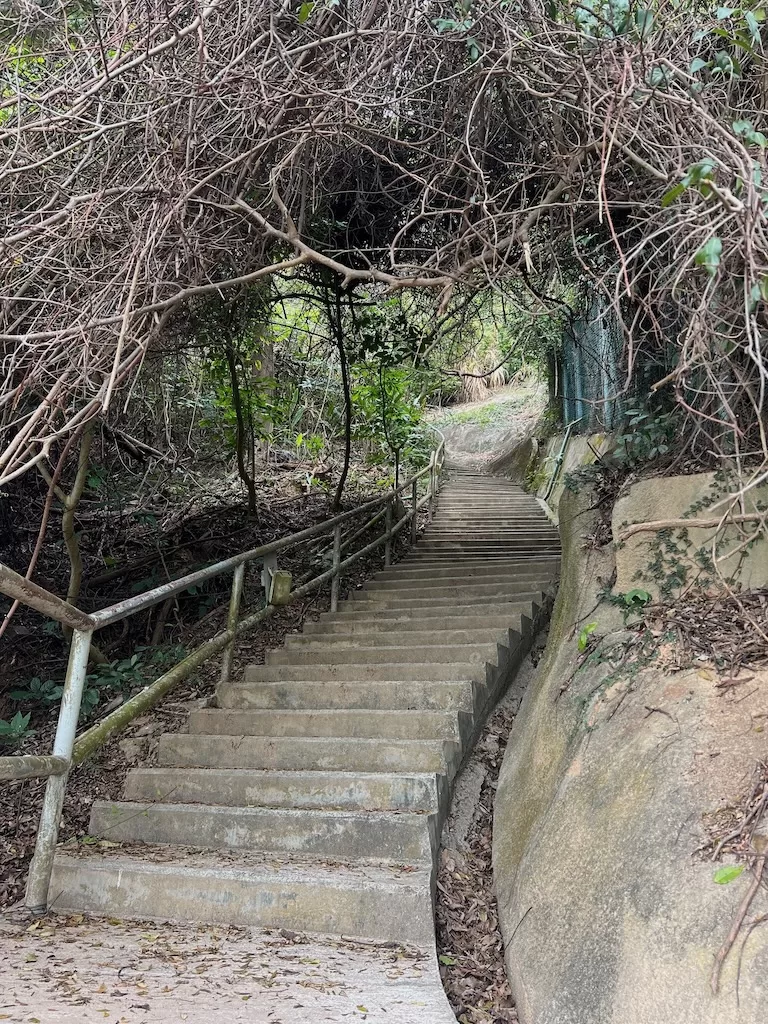
This is the way to go to the Tai O Barracks. At this point of the Tai O Heritage Hotel, enter the slope that will lead you up to the hotel. When you arrive at the top of the slope, instead of turning right, head on to the path on the left. There is a sign that says Military Use. That is the way to get to the Tai O Barracks.
A Hike at Fu Shan (Tiger Hill)
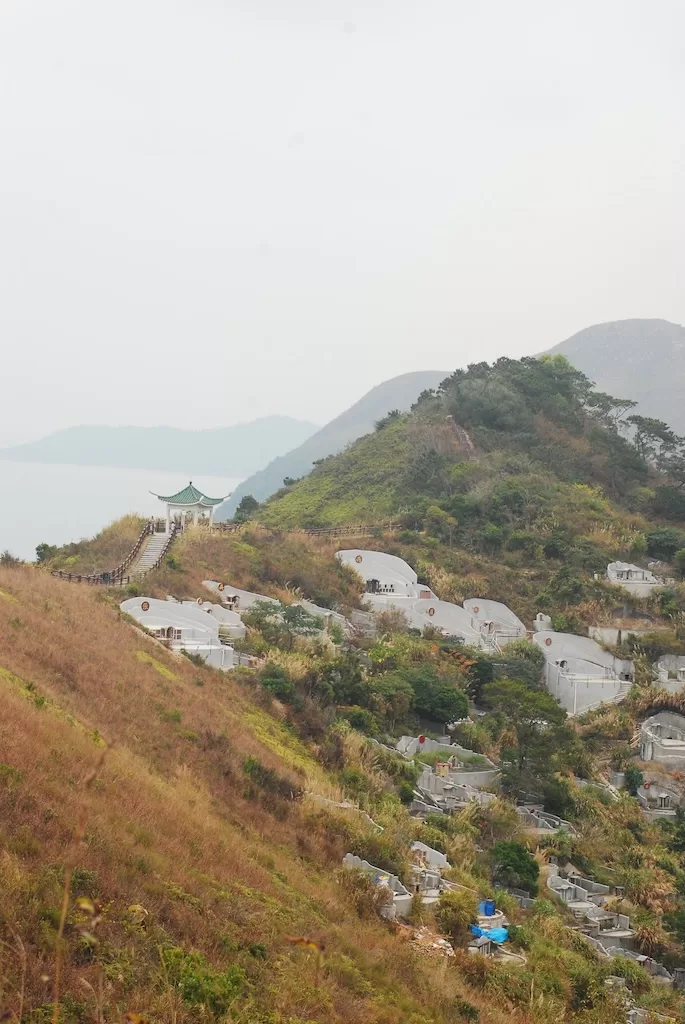
The hike at Fu Shan (Tiger Hill) in Tai O features fantastic open-air views of the Hong Kong-Zhuhai-Macao Bridge. The hike takes just about an hour and it is a very easy climb.
Fu Shan is the highest hill in Tai O. What you should aim for is the viewing pavilion along this path, where you will see both beautiful inland views of Tai O and ocean views with the bridge.
To get to the Fu Shan viewing pavilion, find your way to the Hung Shing Temple of Tai O. Next to the temple on the left, there is a Shaolin Wushu Cultural Centre (photo below, on the right). The trail lies on the left of the Shaolin Wushu Cultural Centre.
After walking about two minutes, you will see the crossroads here. Take the path on your left and begin the gentle ascent. You will soon come to the beautiful scenic part of the trail.
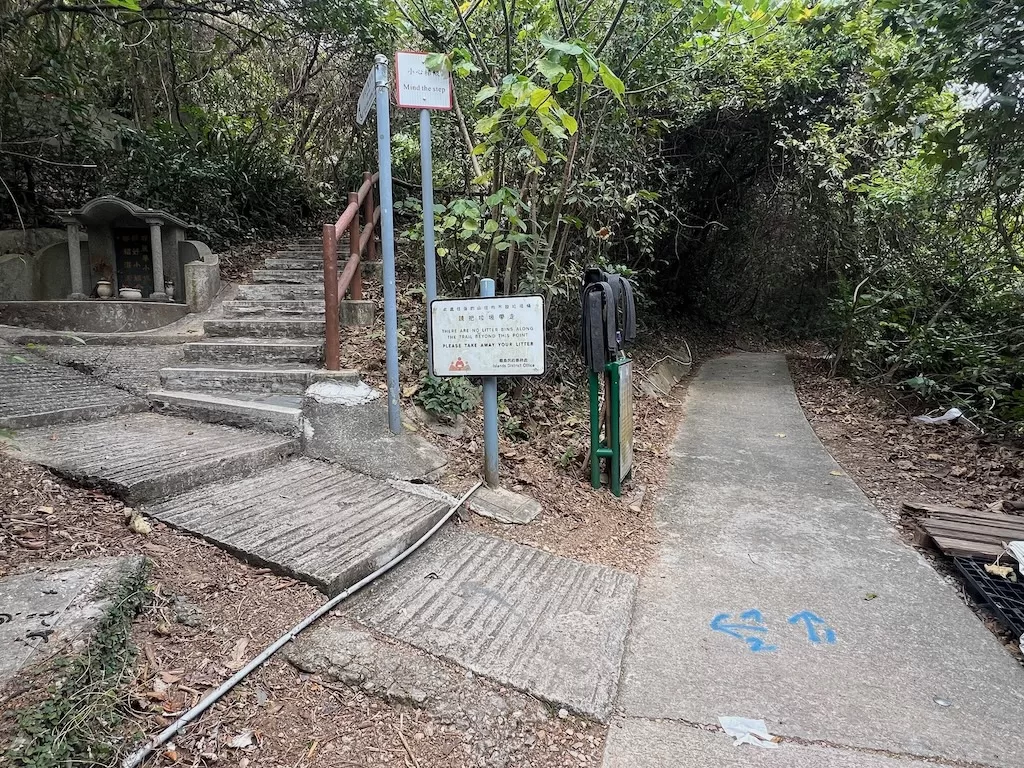
After you finish the trail here, make a right to head toward the direction of the general town area of Tai O, with quite a number of dining establishments (more below on dining).
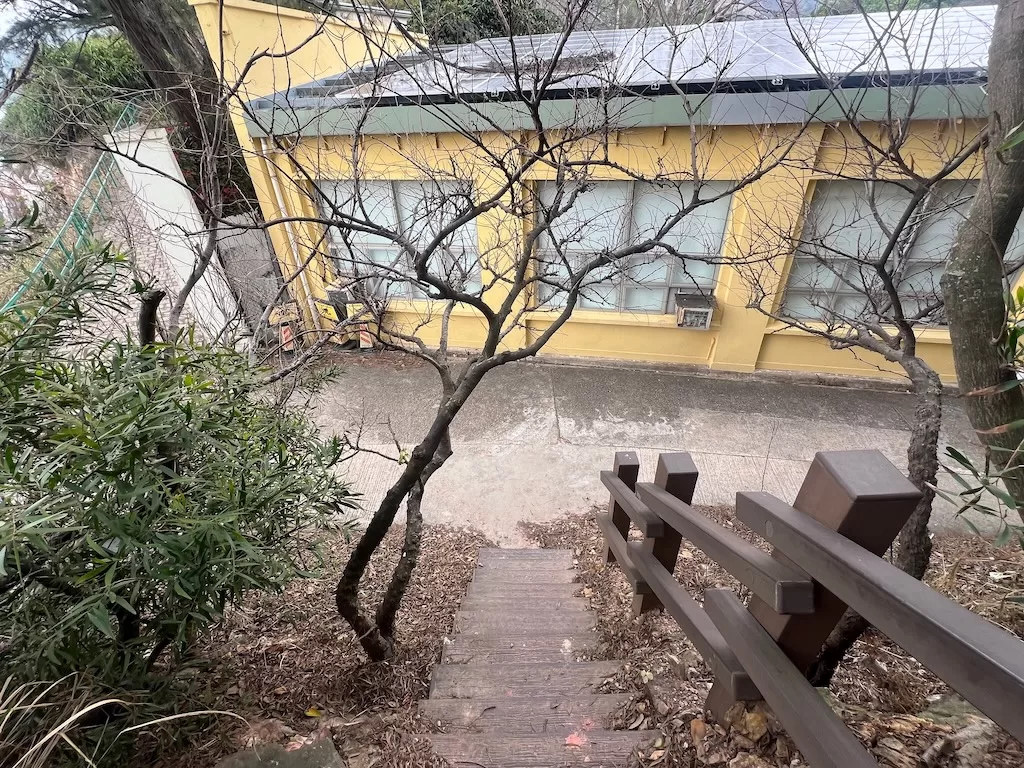
Some Temples to Note
I will only go through these temples very briefly here.
Hung Shing Temple
The Hung Shing Temple of Tai O lies at the beginning of the trail to Fu Shan. A quick look takes just about 5-10 minutes there.
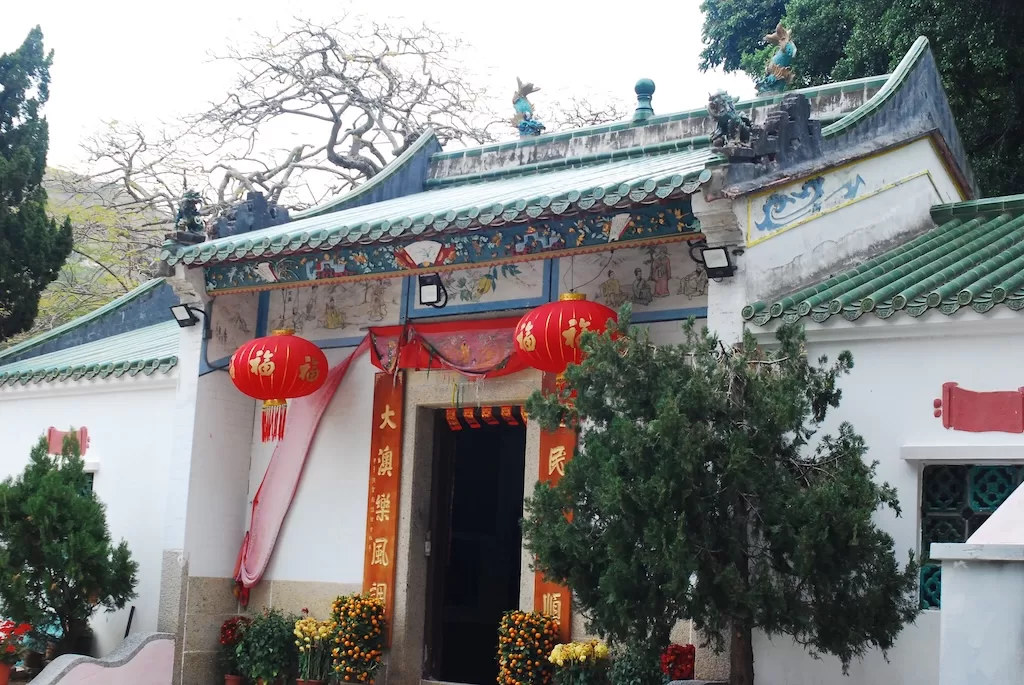
This Hung Shing Temple of Tai O was founded in the 11th year of the Qianlong reign (1748) at the foot of Fu Shan in Tai O. Like so many of the temples in the outlying islands of Hong Kong, this Hung Shing Temple also comes with the good feng shui of “having the mountains at its back and facing the sea.” The Hung Shing Temple faces the ocean. The temple had undergone four restorations in its history, the latest one resulted in a consecration ceremony in 1995.
Hung Shing is the patron deity for the islander and fishermen communities of South China. Like the people of Tong Fuk Tsuen, also in Lantau Island, the people of Tai O revered Hung Shing specifically as the God of the Southern Sea. Hung Shing was a government official in Guangzhou named Hong Hei. He was well versed in matters of meteorology. He was deified by a Song dynasty emperor.
Yeung Hau Temple
The Yeung Hau Temple lies on the way when you have exited the trail and heading toward the village area of Tai O, right by Po Chue Tam. Celebrating the revered historical figure General Yang Liangjie of Song Dynasty, the temple had quite a number of visitors on the day that I visited.
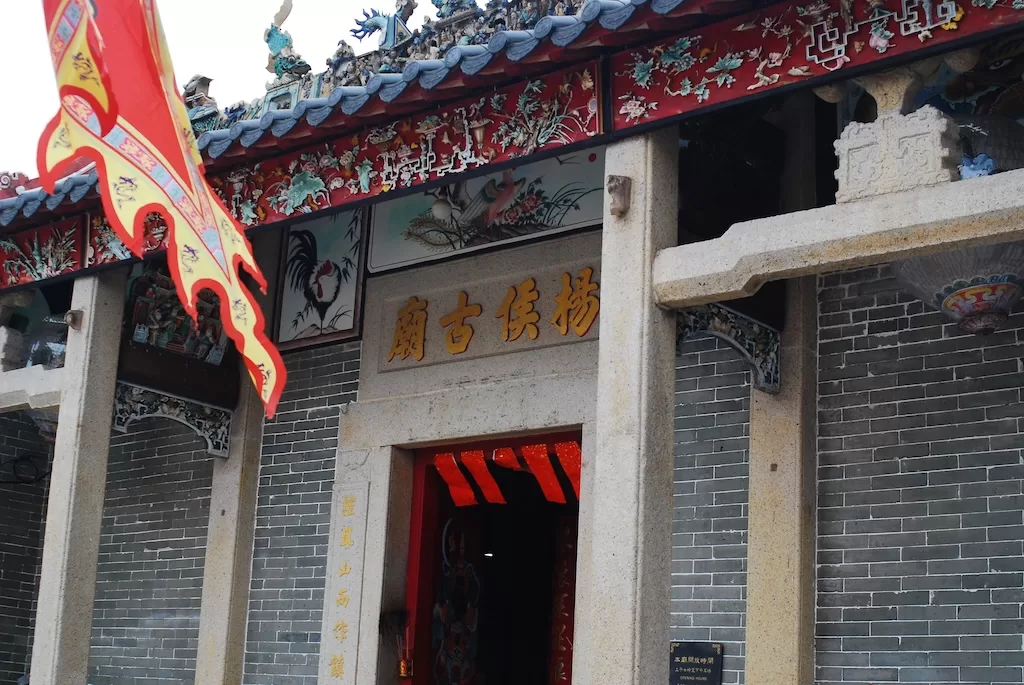
Hau Wong is generally believed to be the Song dynasty general Yang Liangjie, who was a key figure in protecting the last emperors of the Song dynasty during the dynasty’s final demise. The frail last forces of the Song dynasty made it to Hong Kong for a temporary refuge. Legend has it that Yang Liangjie defended against the Yuan forces in a battle in the waters of Lantau Island, preserving Emperor Di Bing, who would be the very last emperor of the Song dynasty.
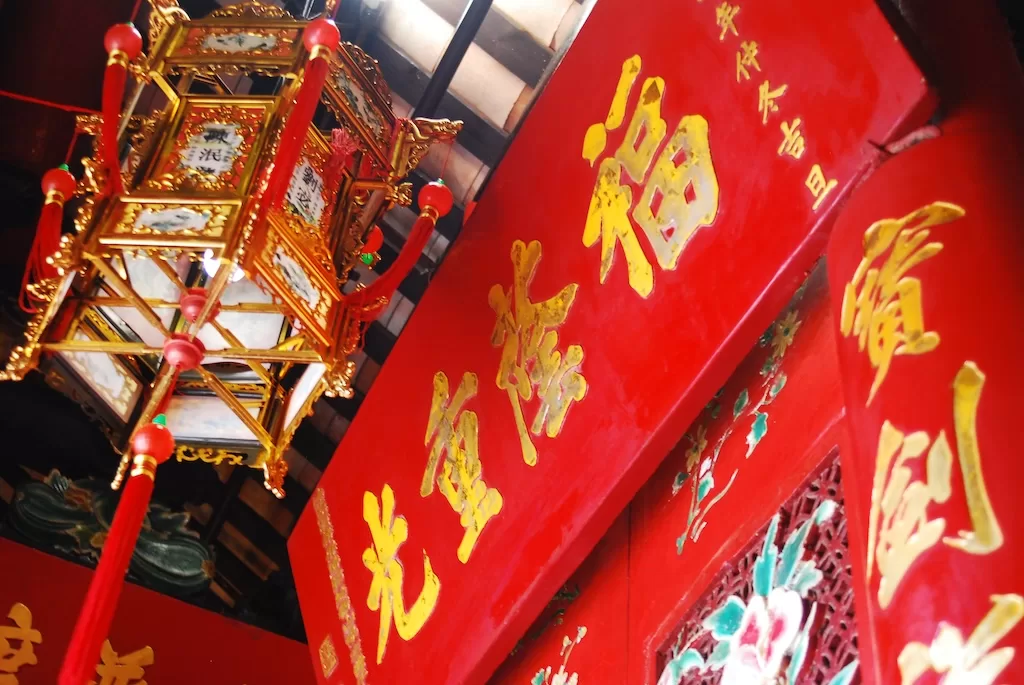
Hau Wong is a patron deity in a few temples in Hong Kong. The most famous one is the Hau Wong Temple of Kowloon City, which is a declared monument. In Lantau Island alone, there is a Hau Wong Temple in Tung Chung, about which I have previously written. Tai O’s Yueng Hau Temple is another one.
The Yeung Hau Temple of Tai O was founded on the 38th year of the Kangxi reign (1699). It had undergone restorations for a few times, the most recent one being in 2016, and it cost HK $10 million. The temple has a long history of holding the birthday celebration of Hau Wong every June 6th of the Lunar calendar.
The Yeung Hau Temple of Tai O is a Grade 1 Historic Building.
Kwan Tai Temple
The Kwan Tai Temple of Tai O lies inside the village area of Tai O. It was founded during the Hongzhi reign of the Ming dynasty (between 1488 and 1505). The Kwan Tai Temple had undergone multiple times of restorations in its long history. It might be one of the oldest temples in Lantau Island.
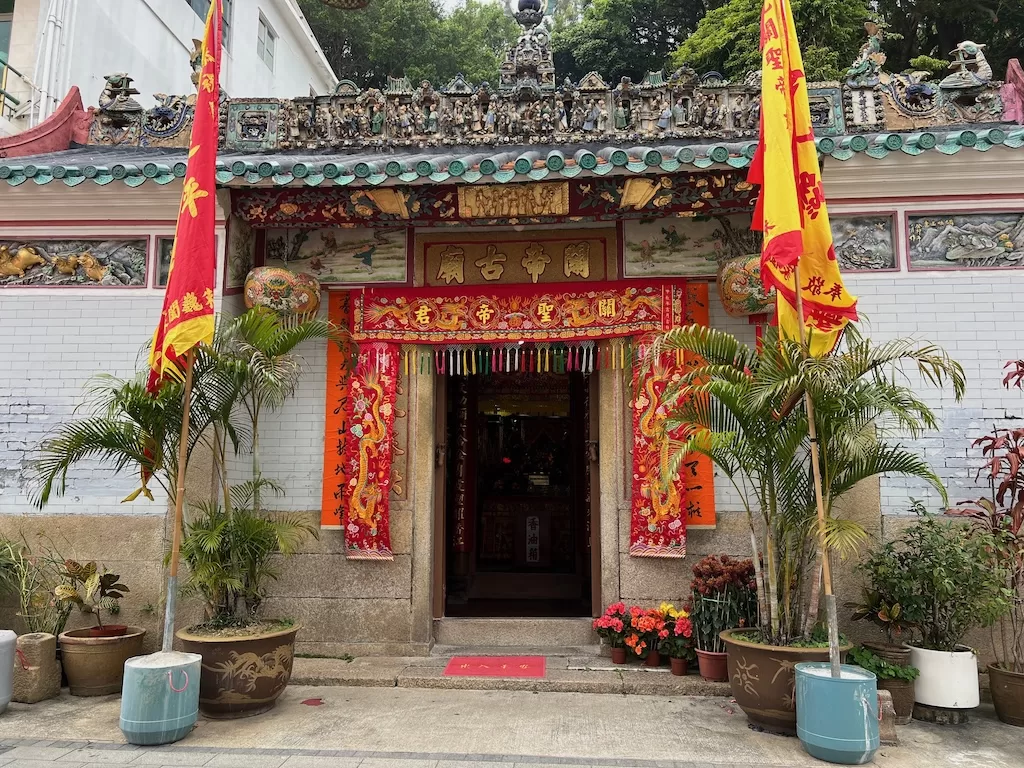 Kwan Tai (also Mo Tai) is the god of war and traditionally the deity that both the police and the bandits revered. Please see the entry on Man Mo Temple for more about the god of war.
Kwan Tai (also Mo Tai) is the god of war and traditionally the deity that both the police and the bandits revered. Please see the entry on Man Mo Temple for more about the god of war.
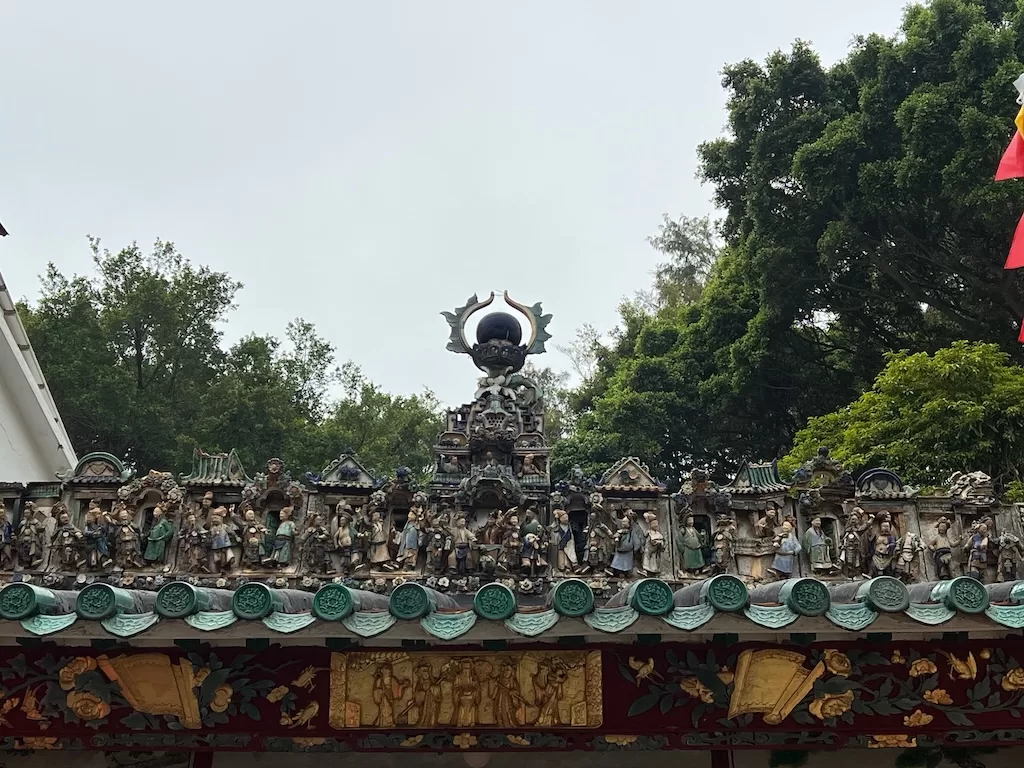
The Kwan Tai Temple of Tai O is a Grade 2 Historic Building.
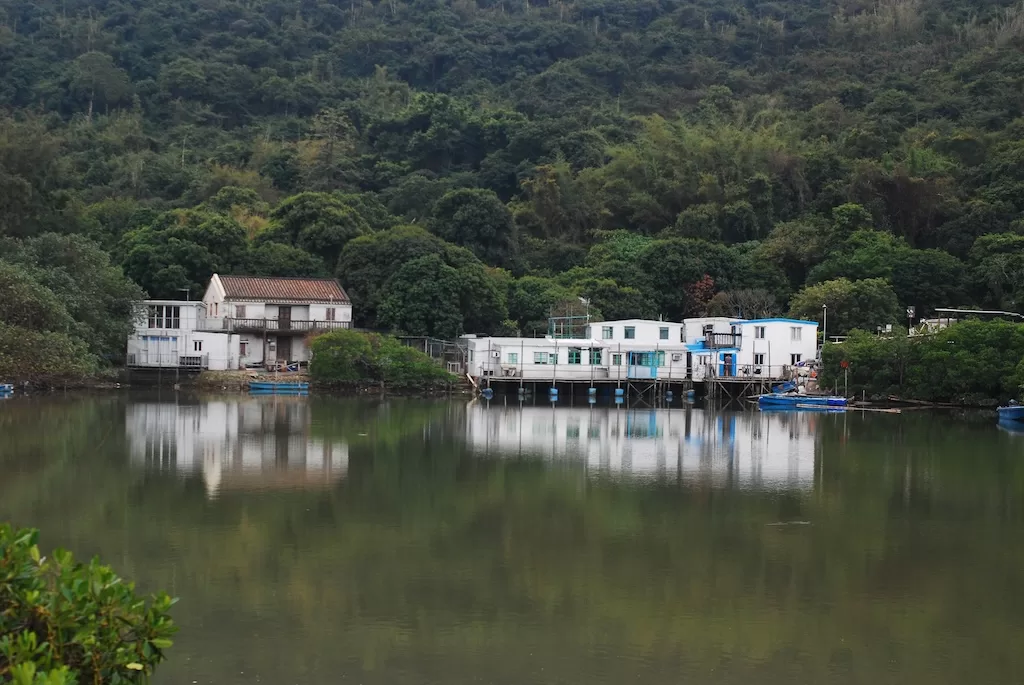
It is possible to hike from Tung Chung to Tai O. The walk is very long for 4 hours, but it is very easy, with almost no climbing invovled.
Finally, the famous pink dolphins of Hong Kong are supposedly viewable in Tai O as well, but from what I understand, this heavily inhabited area is not an ideal place to view them. See my previous entry on a boat tour that bears much greater potential for spotting the pink dolphins.
Some Suggestions for Food in Tai O
Like all fishing villages in Hong Kong, seafood is often featured and touted as the meal of local flavors for tourists. I have previously introduced the Tai O Lookout at the Tai O Heritage Hotel. This time, I opted for cheap comfort food and found Tai O Sha Wo Wong (Tai O King of Claypot), located on No. 85, Kat Hing Street, Tai O. This is the first proper restaurant that you will come across when you have left the trail and about to enter into the town area of the fishing village.
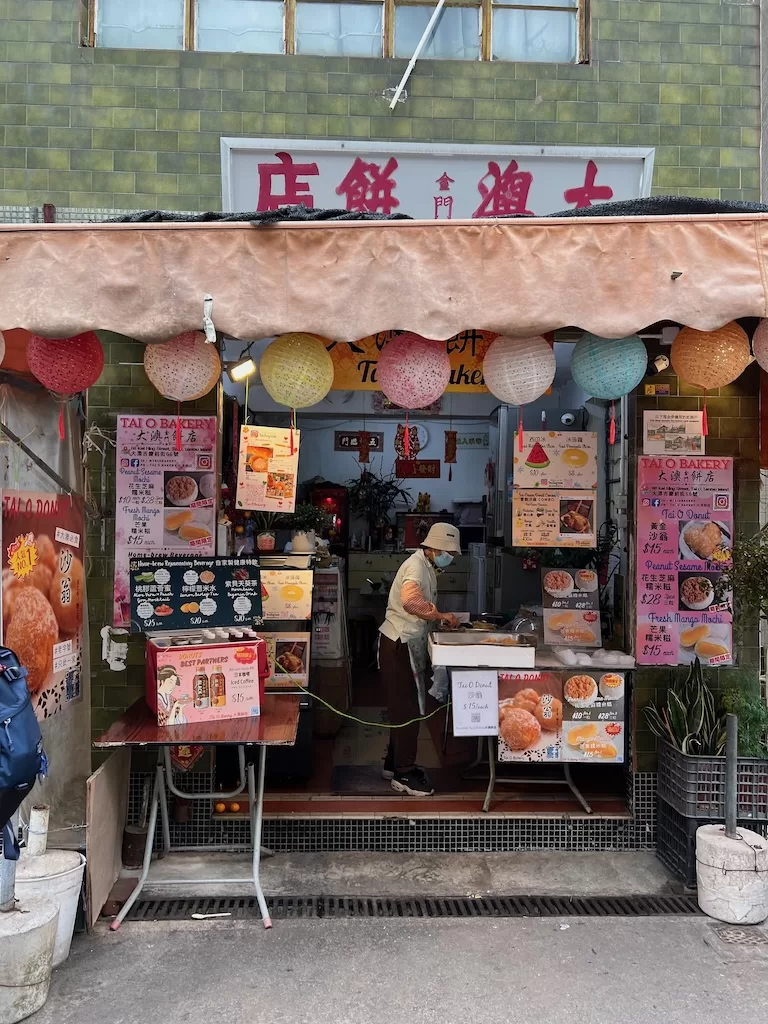
Just a few steps further, you will find Tai O Bakery, which specializes in Chinese donuts, but I preferred their mango mochi.
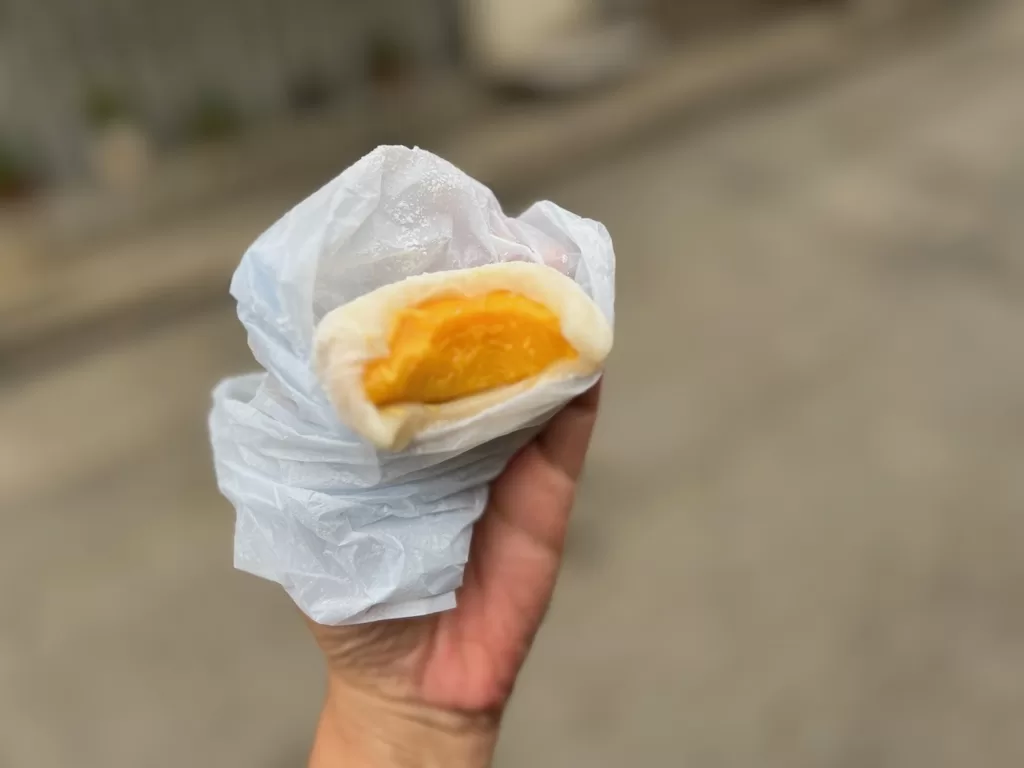
Transportation to Tai O
For most people in Hong Kong, the most natural means of traveling to Tai O is to take the MTR to Tung Chung Station and then take Bus Route 11 from Tung Chung to Tai O. The bus journey takes at least 45 minutes. Tai O is close to the southwestern end of Lantau Island, and it really is very far.
For those living in northwestern New Territories, they will be well served in taking the ferry from the Tuen Mun Pier. From Tuen Mun Pier to Tai O, the ferry ride takes about an hour. The same ferry will take you to Tung Chung in 25 minutes. Please plan your journey, however, as the ferry schedule is rather sparse as compared to other means of transportation.

Sources
The Wikipedia on Property Owned by Central People’s Government in Hong Kong.
The Hong Kong Government Information Website, LCQ9: Military Sites.
Gwulo.com, Military Sites of the PLA Hong Kong Garrison.
